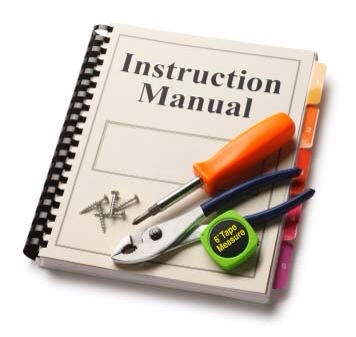This is my third post in a series of posts going ‘Back to Basics‘, re-examining techniques and ideas introduced on teacher training courses.
One of the first things that is often taught on a teacher training course is the importance of clear instructions when setting up activities. Classic examples are often given of bad instructions, such as those below when setting up a ‘find someone who…’ activity.
What I’d like you to do in a minute, if you could just listen to me for a second, I’d like you to look at this worksheet (T distributes worksheet) and look at the sentences like ‘find someone who likes cycling’, then stand up and ask everyone if they like cycling, then if they do, write their name and if they don’t ask someone else, then ask different people different questions and try to find someone for each sentence, all right? Ask questions and find the people… Stand up, you’ve got 5 minutes. Yes Luca, stand up and ask questions… Oh and ask other questions too.
Some tips for better instructions
1. Get full attention
There’s nothing worse than having to repeat yourself over and over again. Wait until everyone is looking at you and listening to you. Think about your position in the class, can everyone see you? Avoid giving instructions whilst writing on the board.
2. Grade your language
Slow down a little and use clear, uncomplicated language, use imperatives.
3. Cut out unnecessary language
Lose things like cleft sentences (‘What I’d like you to do now is…’), which are often just noise.
4. Stage the instructions
Is it necessary to give instructions for the entire activity? Just give the essential instructions first, then further instructions later. Do students need to know that when they have finished writing they are going to check with another student? Tell them this later.
5. Plan your instructions
Think carefully about the exact wording and write the instructions in your lesson plan. You may or may not actually use them in the lesson, but the process of planning them should help.
6. Don’t explain, demonstrate
Demonstrations and gestures are always better than wordy explanations.
7. Worksheets after instructions
If you have a worksheet, give it out at the end of the instructions, hold one against your chest to demonstrate, or display it on the board. The minute you give students a worksheet, they generally stop listening to you and start reading.
8. Use Information Checking Questions (ICQs)
Ask the students a few simple questions after you have given your instructions to check they have understood.
9. Monitor the activity straight away
As soon as the students start, check they are doing what you intended, help those who appear to have misunderstood.
Let’s see if we can improve those instructions for the ‘find someone who…’ activity again.
T writes on board:
Find someone who … likes cycling. ___________________
T – ‘What’s the question?’
Ss – ‘Do you like cycling?’
T – ‘Good, Sara, do you like cycling?
Sara – ‘No, I don’t’
T – ‘Enrico, do you like cycling?’
Enrico – ‘No, I don’t’
T – ‘Giusi, do you like cycling?’
Giusi – ‘Yes, I do’
T – ‘Oh, how often do you go cycling?’
Giusi – ‘Sometimes I go cycling at the weekend’
T writes ‘Giusi’ in space next to sentence.
T holds up worksheet to chest pointing at sentences.
T – ‘Here are ten similar sentences… for example… find someone who has visited Paris… What’s the question?’
Ss – ‘Have you ever visited Paris?
T – ‘Good… Ask the other students questions… If someone says yes, write their name and ask for more information… You have 10 minutes’.
Follow up with some ICQs:
T – ‘Do you speak to one person, or lots of people?’ Ss –‘Lots of people’.
T – ‘What do you do if the person says no?’ Ss –‘Ask another question’, ‘ask someone else’.
T – ‘What do you do if the person says yes?’ Ss – ‘Write their name and ask for more information’.
T – ‘Do you write a name or an answer?’ Ss – ‘A name’.
T – ‘How much time do you have?’ Ss – ’10 minutes’.









Good post, how often do we hear students saying to each other in class ‘what are we supposed to be doing again?”.
LikeLike
Thanks Aiyshah
LikeLike
A useful reminder, thanks!
LikeLike
Great post and an even better idea for a series of posts. Sometimes the easiest things can turn out to be the most challenging. I’ve linked it on my blog here: http://teflreflections.wordpress.com/for-teachers/some-theory/principles/
LikeLike
Thanks Marek! Great blog by the way
LikeLike
Thanks, Jonny. Love yours too. Especially the way it was set up around the recipes idea. Very smart.
LikeLike
Good thoughts….
LikeLike
Pingback: Back to Basics | Recipes for the EFL classroom
I teach junior high school students right now and these points are all key.
LikeLike
I can’t believe it, just as I was looking for some inspiration from your blog, I find that you’ve posted on the same topic I’ve just given a workshop on! At least I said most of the same things-good to know!
LikeLike
Hello! What a great blog you have! You should write about Eliademy, they provide a new and really good tool for the 21st century classroom.
LikeLike
Pingback: Useful links for CELTA | Sandy Millin